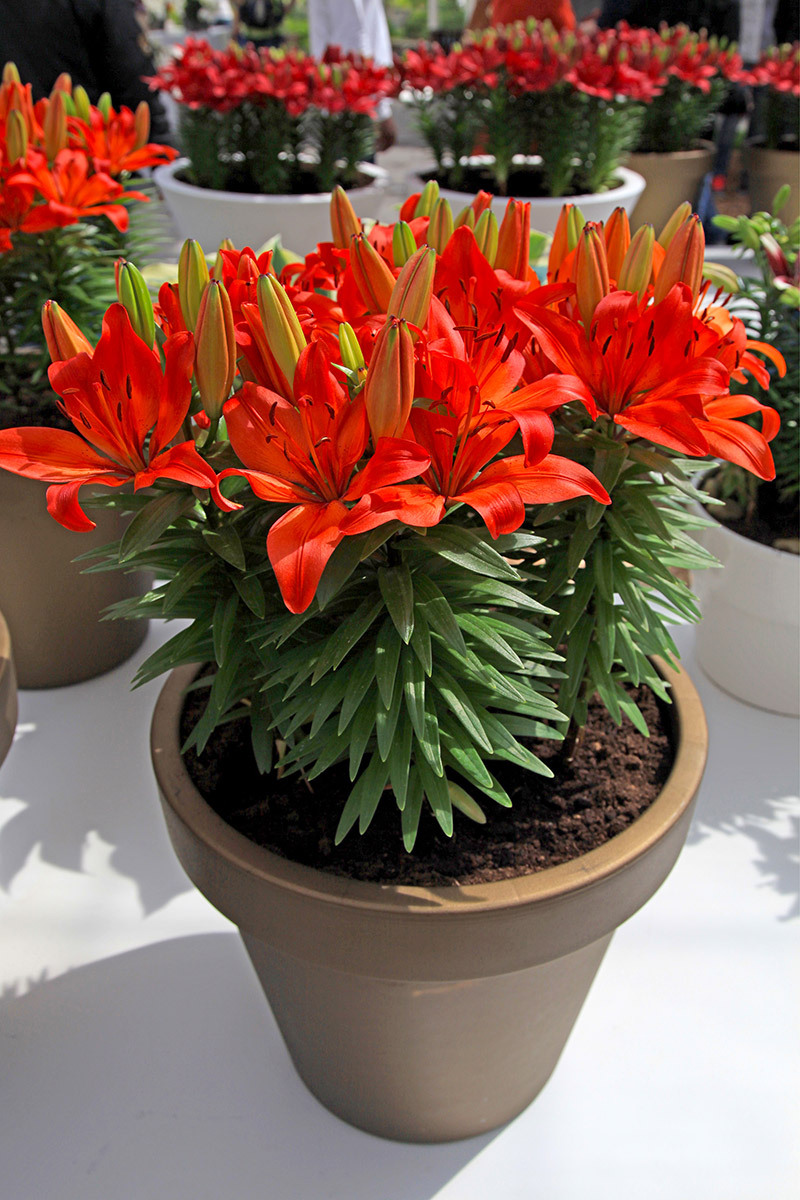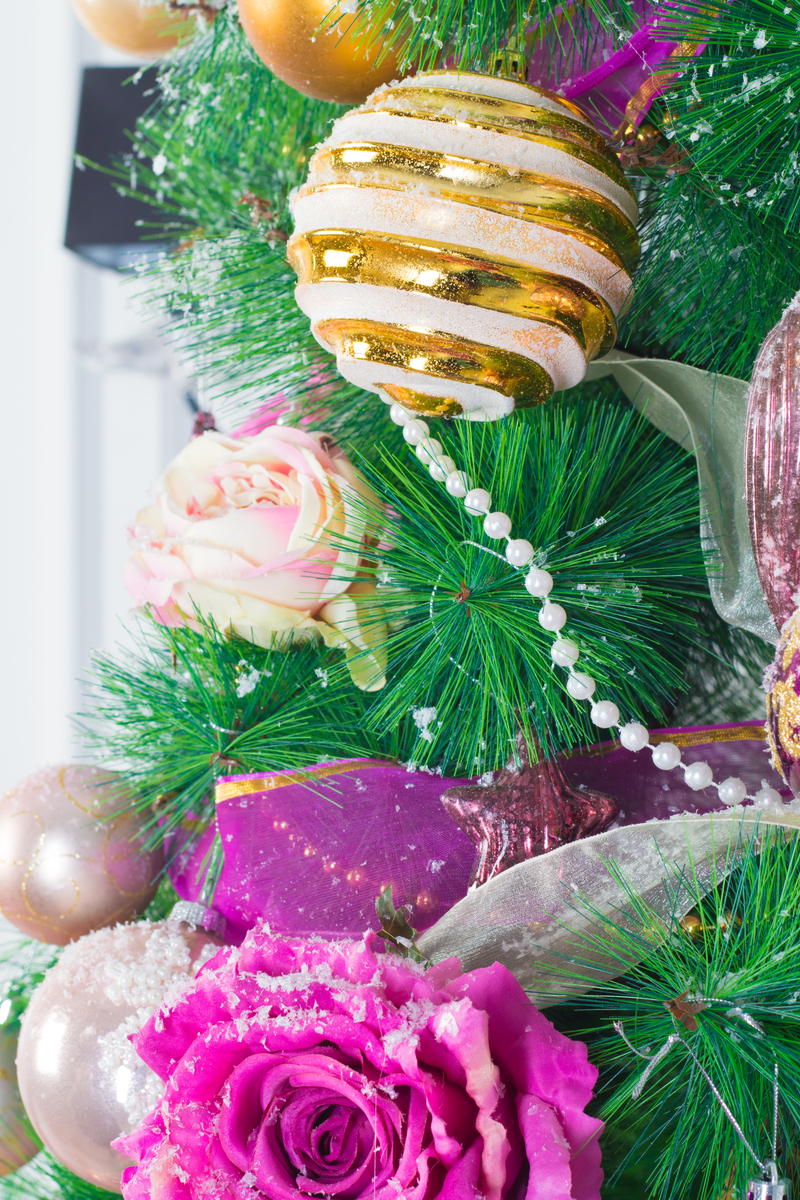Inspire Your Garden with Perfectly Cared for Hydrangeas
Posted on 14/08/2025
Inspire Your Garden with Perfectly Cared for Hydrangeas
Hydrangeas are some of the most beloved flowering shrubs around the globe. Be it the explosion of summer color, their lush foliage, or their classic farmhouse charm, these blossom-drenched beauties can elevate any garden space. Are you ready to transform your outdoor haven and inspire your garden with beautifully maintained hydrangeas? Let's uncover all the secrets to hydrangea care, ensuring you enjoy healthy, vibrant blooms every season!
Why Choose Hydrangeas for Your Garden?
Before diving into their care, let's explore why hydrangeas are a gardener's favorite:
- Versatile Visual Appeal: Hydrangeas come in a variety of shapes, sizes, and colors, making them suitable for almost any garden design.
- Long Blooming Season: Many varieties provide color from late spring through fall.
- Low Maintenance Needs: Once established, hydrangeas thrive with just a little attention and care.
- Cut Flower Delight: Hydrangeas are stunning in bouquets and floral arrangements.
- Wildlife Friendly: Their flowers attract pollinators, adding life to your garden.
If your goal is to inspire your landscape with effortlessly breathtaking displays, perfectly cared for hydrangeas are an excellent choice.

The Many Faces of Hydrangeas: Popular Varieties
The hydrangea family is more diverse than many realize! Here's a look at some popular types you can use to bring unique inspiration to your garden:
- Hydrangea macrophylla (Bigleaf Hydrangea): Known for their mophead or lacecap blooms that can be pink, blue, or purple depending on soil pH.
- Hydrangea paniculata (Panicle Hydrangea): Cone-shaped, white to pinkish flower clusters, tough and sun-tolerant.
- Hydrangea arborescens (Smooth Hydrangea): Noted for large round blooms, with the popular 'Annabelle' variety featuring white flowers.
- Hydrangea quercifolia (Oakleaf Hydrangea): Recognized by oak-shaped leaves and striking white panicles that age to a pinkish hue.
- Hydrangea serrata (Mountain Hydrangea): Smaller, delicate blooms, perfect for compact gardens and containers.
Choosing the right variety is the first step in inspiring your garden with hydrangeas that flourish.
Perfect Location: Where Hydrangeas Thrive
Hydrangeas are flexible but do best in spots that meet certain criteria:
- Sunlight: Most hydrangeas prefer *morning sun and afternoon shade*. Panicle varieties can tolerate full sun in cooler climates.
- Soil: Rich, well-drained, and moisture-retentive soils are ideal. Hydrangeas dislike "wet feet," so avoid waterlogged locations.
- Air Circulation: Good airflow prevents diseases while avoiding direct, harsh winds.
Take a moment to analyze your garden's microclimates and pick a spot where your hydrangeas can shine!
Planting Your Hydrangeas for Spectacular Results
How to Plant Hydrangeas
- Choose Your Site: Find a place that meets the sun and soil needs for your chosen type.
- Dig the Hole: Make it twice as wide and as deep as the root ball.
- Enrich the Soil: Mix compost into the soil to provide nutrients and improve drainage.
- Position the Plant: Place your hydrangea in the hole, ensuring the crown is at soil level.
- Backfill and Water: Fill in the hole and water deeply to settle the soil.
- Mulch: Add a 2-3 inch layer of mulch to keep roots cool and moist.
Tip: Space plants according to their mature size to avoid overcrowding and to encourage abundant blooming.
Essential Hydrangea Care for Lush Growth
To inspire your garden with healthy hydrangeas, consistent yet simple care is the key. Let's cover the most important aspects:
Watering Hydrangeas
- Hydration is Vital: Hydrangeas require regular, deep watering, particularly in hot weather.
- Consistency Matters: Allow the top inch of soil to dry between waterings, but never let the shrub wilt.
- Best Practice: Water at the base in the early morning to reduce evaporation and leaf moisture.
Perfect water management leads to robust, show-stopping blooms every year.
Fertilizing Hydrangeas
- Before Spring Growth: Apply a balanced, slow-release fertilizer as new growth begins.
- Avoid Overfertilization: Excess nitrogen encourages foliage at the expense of flowers.
- Follow Specific Needs: Some types, like Hydrangea macrophylla, need tailored nutrition for optimal color.
Quick Tip: Test your soil pH if you want to control bloom color, especially for blue and pink hydrangeas!
Pruning Hydrangeas: When and How
Pruning hydrangeas is crucial for maintaining their shape, size, and flowering potential. Yet, pruning is where many gardeners get confused!
- Know Your Type: Different hydrangeas bloom on old or new wood.
- Old Wood Bloomers (Macrophylla, Oakleaf, Serrata): Prune immediately after flowering, only removing dead or crossing stems. Avoid winter or early spring pruning.
- New Wood Bloomers (Paniculata, Arborescens): Prune late winter or early spring before new growth emerges.
- Routine Cleanup: Always remove dead, damaged, or diseased wood to inspire healthier, more vigorous plants.
When in doubt, do minimal pruning. Hydrangeas can forgive a missed haircut more than a mistimed one!
Changing Hydrangea Colors: The Magic of Soil pH
One of the most alluring features of hydrangeas, especially Hydrangea macrophylla, is their pH-dependent flower color:
- Acidic Soil (pH below 6): Produces blue blooms.
- Neutral to Alkaline Soil (pH 7+): Results in pink or even purple tones.
How to Change Hydrangea Colors?
- To Encourage Blue: Add soil acidifiers like aluminum sulfate or pine needle mulch.
- To Encourage Pink: Raise the pH using garden lime or dolomitic limestone.
This living color palette lets you reinvent your garden's inspiration year after year!
Common Hydrangea Problems & Solutions
Even in the best conditions, problems can sometimes arise. Here's how to overcome common hydrangea challenges:
Yellow Leaves
- Possible Causes: Overwatering, root rot, or iron deficiency.
- Solutions: Check soil drainage; use an iron supplement if needed.
Wilting
- Possible Causes: Underwatering or transplant shock.
- Solutions: Increase watering and provide temporary shade for young plants.
No Blooms
- Possible Causes: Improper pruning, frost damage, or too much fertilizer.
- Solutions: Prune at the right time for your plant type; protect from extreme weather.
Pests and Disease
- Aphids, Spider Mites, Powdery Mildew: Treat with insecticidal soap, horticultural oils, or fungicides as directed.
- Good Garden Hygiene: Clean up fallen leaves and prune for airflow.
Hydrangeas through the Seasons: Year-Round Inspiration
Hydrangeas can beautify your landscape across all four seasons:
- Spring: Watch for buds and new leaves--time to fertilize and monitor for late frosts.
- Summer: Enjoy the peak of blooms; deadhead faded flowers to encourage more.
- Fall: Oakleaf hydrangeas show fiery foliage, and dried blooms add rustic elegance.
- Winter: Leave some dried flowers for winter interest and to shelter wildlife.
With thoughtful care, hydrangeas inspire your garden year after year, offering ever-changing beauty and charm!
Creative Ways to Design Inspired Gardens with Hydrangeas
- Foundation Plantings: Line your home's foundation with hydrangea shrubs for a welcoming facade.
- Woodland Retreat: Pair hydrangeas with ferns, hostas, and shade-loving perennials for a lush haven.
- Color-Themed Borders: Establish pink, blue, or white hydrangea groupings for a cohesive palette.
- Mixed Flower Beds: Combine hydrangeas with roses, lilies, and ornamental grasses for varied interest.
- Container Displays: Dwarf hydrangeas shine in pots--perfect for patios and balconies!
Let your imagination lead as you weave hydrangeas into your garden's tapestry.

Hydrangea Care FAQ: Your Top Questions Answered
How do I know which hydrangea type I have?
Identify by flower shape and leaf style. Bigleaf/mophead hydrangeas have large, round blooms and glossy, thick leaves. Panicle hydrangeas feature cone-shaped clusters and are often sun tolerant.
How can I encourage bigger hydrangea blossoms?
Ensure your plants are well-fed, not crowded, and pruned according to their blooming habits. Remove only dead or weak stems, and never prune more than necessary.
Can hydrangeas survive winter?
Yes! Most hydrangeas are hardy and require only light mulching in cold regions. In severe climates, cover with burlap or frost cloth as insurance during frigid spells.
Are hydrangeas safe for pets?
Hydrangeas contain cyanogenic glycosides that are mildly toxic if consumed. Keep pets and children from eating the plant.
Inspire Your Garden Today: The Enduring Magic of Hydrangeas
Bringing hydrangeas into your garden is more than adding a plant--it's introducing a living, ever-evolving source of inspiration and tranquility. With simple, focused care, these shrubs reward you with an abundance of color and elegance year after year.
Start with the right hydrangea, plant it in the perfect spot, give it attentive care, and embrace color-changing magic. Your garden can quickly become the envy of the neighborhood!
Looking for even more inspiration? Experiment with creative designs, combine hydrangeas with other blooms, or bring their beauty indoors by cutting flowers for arrangements. Your perfectly cared for hydrangeas will always spark joy and admiration.
Plant, nurture, and inspire--let hydrangeas elevate the beauty of your garden today!
Latest Posts
The Ultimate Guide to the Top 12 Long-Lasting Blooms
Discover the Magic of Tulips with Seven Fascinating Facts
Steps to Keep Your Poinsettias Radiant Longer






